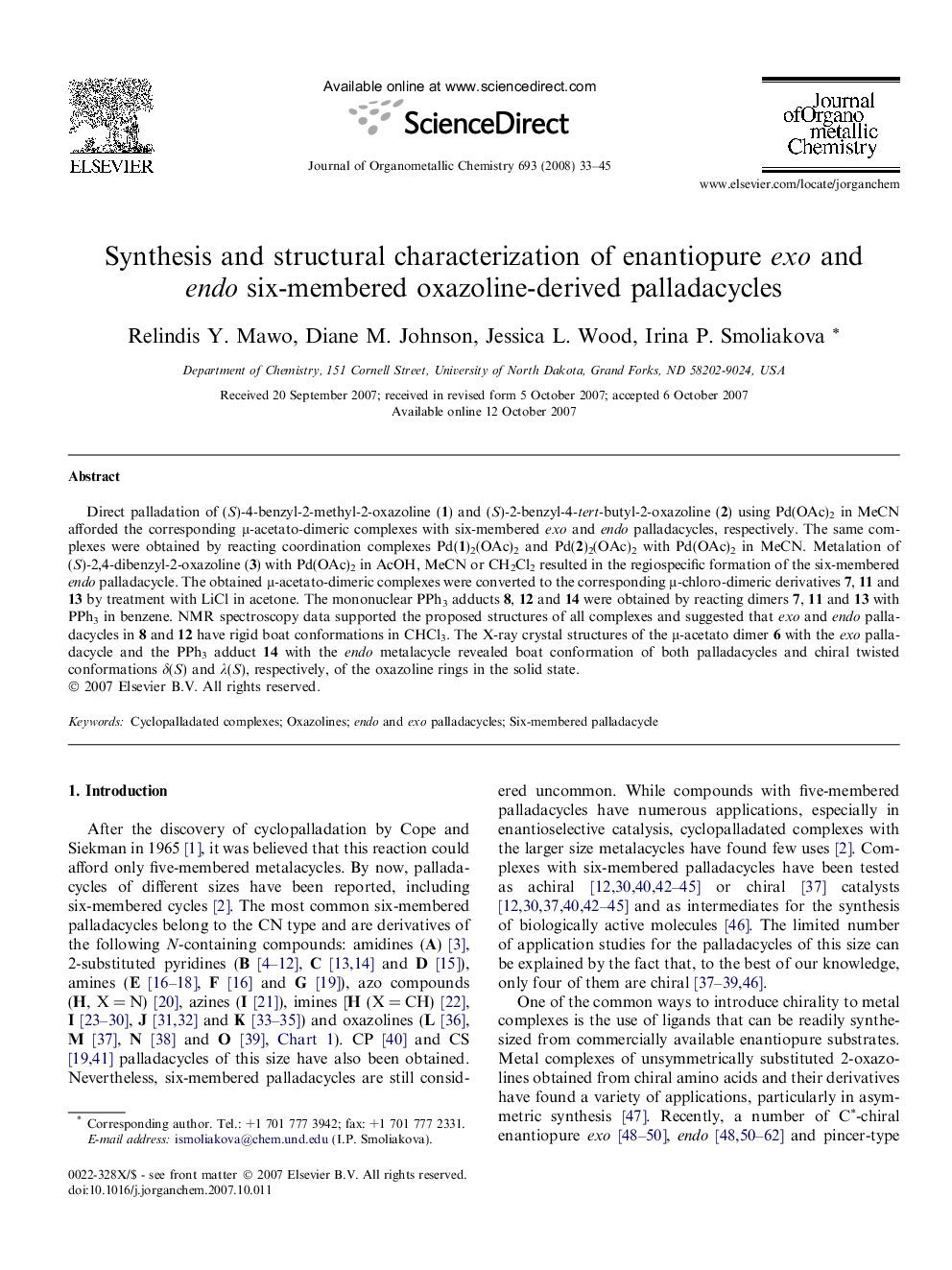| Article ID | Journal | Published Year | Pages | File Type |
|---|---|---|---|---|
| 1327086 | Journal of Organometallic Chemistry | 2008 | 13 Pages |
Direct palladation of (S)-4-benzyl-2-methyl-2-oxazoline (1) and (S)-2-benzyl-4-tert-butyl-2-oxazoline (2) using Pd(OAc)2 in MeCN afforded the corresponding μ-acetato-dimeric complexes with six-membered exo and endo palladacycles, respectively. The same complexes were obtained by reacting coordination complexes Pd(1)2(OAc)2 and Pd(2)2(OAc)2 with Pd(OAc)2 in MeCN. Metalation of (S)-2,4-dibenzyl-2-oxazoline (3) with Pd(OAc)2 in AcOH, MeCN or CH2Cl2 resulted in the regiospecific formation of the six-membered endo palladacycle. The obtained μ-acetato-dimeric complexes were converted to the corresponding μ-chloro-dimeric derivatives 7, 11 and 13 by treatment with LiCl in acetone. The mononuclear PPh3 adducts 8, 12 and 14 were obtained by reacting dimers 7, 11 and 13 with PPh3 in benzene. NMR spectroscopy data supported the proposed structures of all complexes and suggested that exo and endo palladacycles in 8 and 12 have rigid boat conformations in CHCl3. The X-ray crystal structures of the μ-acetato dimer 6 with the exo palladacycle and the PPh3 adduct 14 with the endo metalacycle revealed boat conformation of both palladacycles and chiral twisted conformations δ(S) and λ(S), respectively, of the oxazoline rings in the solid state.
Graphical abstractThe first example of enantiopure six-membered exo palladacycle and examples of rare six-membered endo palladacycles were obtained either by cyclopalladation of oxazolines (HL) using Pd(OAc)2 or by reacting Pd(HL)2(OAc)2 with Pd(OAc)2. The regiospecific reaction of (S)-2,4-dibenzyl-2-oxazoline with Pd(OAc)2 demonstrated a preference of the endo cyclopalladation over exo.Figure optionsDownload full-size imageDownload as PowerPoint slide
